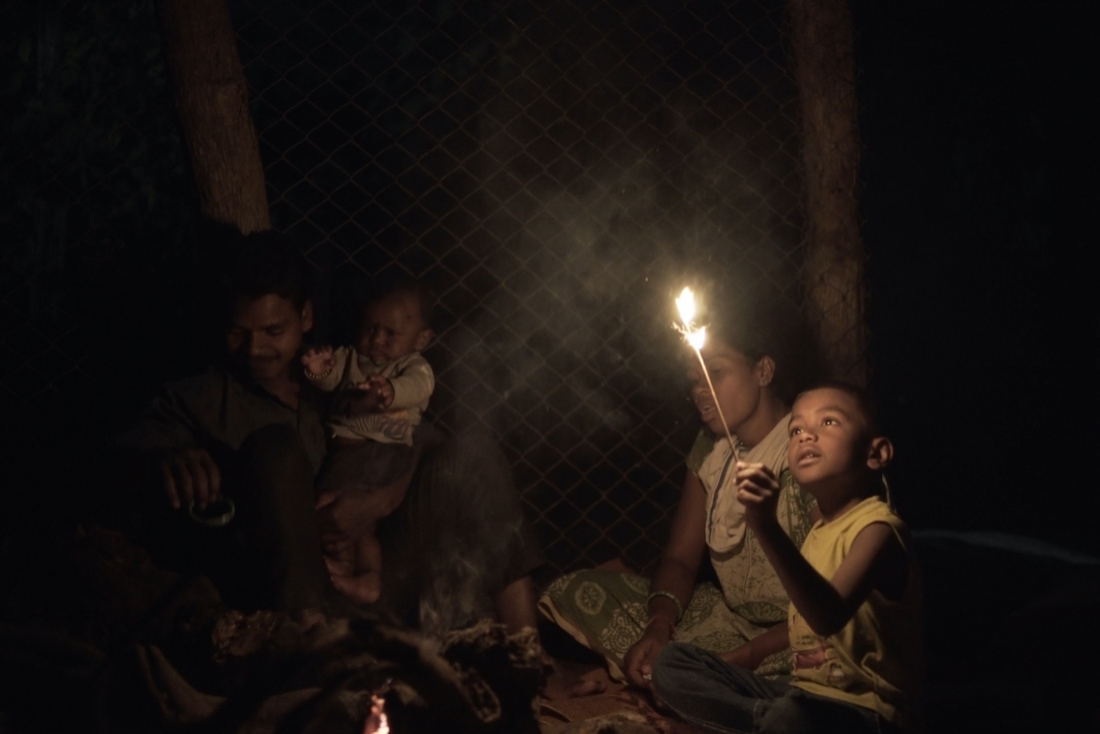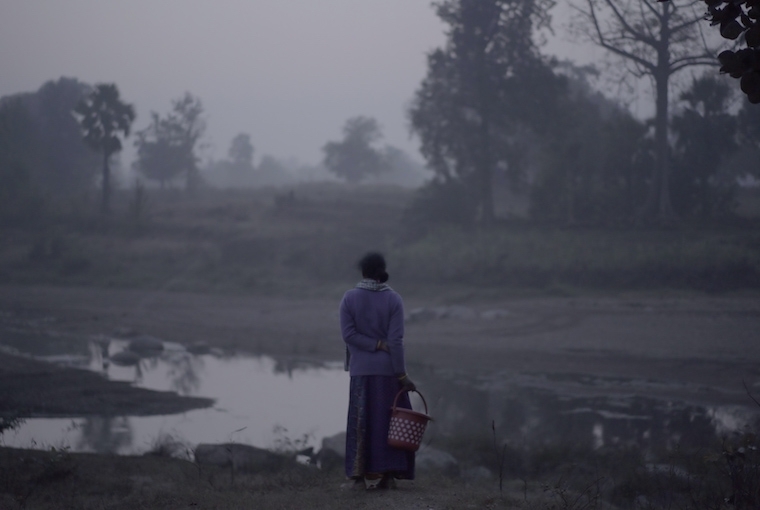

We revisit our conversation with the co-director of the film, Arya Rothe, as it has won the Best Documentary award at the Tirana International Film Festival.
A Rifle and a Bag is a gripping story about Somi and her husband, who met and fell in love while fighting alongside the Naxalites — a communist guerrilla group that has been fighting since the 60s for the rights of the tribal communities of India. After a decade of armed struggle, the couple deserted the movement and surrendered to the police. Ever since, they have been striving to forge a new identity, educate their two children and reconcile their violent past with the fervent desire to integrate into the hostile Indian society.
Three girls — Arya Rothe from India, Cristina Hanes from Romania and Isabella Rinaldi from Italy — and their NoCut Film Collective is responsible for making the film against all odds. The girls met while studying together at DocNomads Master Course in Documentary Directing, and after three months of looking for a story, they met Somi and her husband in India. They went ahead with the making of the film, while facing struggles by both their subjects and the funding. Eventually, the documentary was supported by Doha Film Institute (Qatar), IDFA Bertha Fund (Netherlands), Asian Cinema Fund (South Korea) and AlterCine Foundation (Canada). The film had its world premiere at the International Film Festival Rotterdam (IFFR) and was awarded with Special Mention of the Jury before making its way to India at Dharamshala International Film Festival’s digital edition, which begins this week.
We spoke with the Indian counterpart of the collective, Arya Rothe, who grew up in Pune and studied at Srishti School of Design, before making her way to Europe to enhance her knowledge of filmmaking. Excerpts follow:
When did your romance with filmmaking begin?
My mother used to take me to a film club that had just begun in my city. I was 11 years old. They used to screen films from different countries every month at the National Film Archives. I never missed a screening. Before walking into the film theatre we had to leave the footwear outside, which gave a subtle feeling of reverence. Inside, the Film Archives’ screening room used to be very quiet and cold. It had a very peculiar musty smell of wood, that still makes me nostalgic. My first introduction to cinema was this sensuous prelude, which would prepare me for the moment when the lights would go down, submerging me into the screen. Everything that was happening on the screen felt like it was there just for me. Even though shared with many, cinema had the power of being exclusive. Films were the first relief I experienced from my otherwise chaotic childhood and it was also my first introduction to the world outside of Pune. As I grew up, it inevitably became my medium of expression.
Why did you choose to study at DocNomads? Also, tell us why you chose documentary as your medium?
I was studying fiction filmmaking in Prague, and even though I was enjoying the course, I felt that I couldn't connect or work directly with the Czech society as much as I wanted to. What I was making, even considering the collaborations with classmates, was primarily a product of my imagination. I found this limiting. I wanted a more direct connection and exchange with my surroundings, and that's how I was drawn to documentary filmmaking, leading me to DocNomads. It was a life-altering experience for me. We were 23 documentary students, all from different countries, travelling and making films in very distinct cities in Europe.
I learnt to find ways to communicate with people beyond the boundaries of culture. I learnt to listen and observe without understanding the language. It formed a worldview that I deeply cherish. Though I am not much for labelling films as documentary or fiction, what I find most fascinating about author driven documentaries is the process of making it. The film works as a catalyst to understand your socio-political surroundings, and gain deeper insights into yourself. Having lived in India all my life, my individuality has always been secondary to the society I was brought up in. My surroundings have directly contributed to who I am. And through films I get to explore intimate, intricate facets of the relationship I share with the society. I get to learn a lot and it helps me understand myself better.
Your first documentary short, Daughter’s Mother, explored the relationship of a mother suffering from Alzheimer’s and her daughter who wants to be close to her in her last days. Where did you find them?
I was studying in Budapest when I made the graduation short, Daughter's Mother. Both my grandparents back home were ill with Alzheimer's at that time and I was feeling helpless since I couldn't be there for my mother who was looking after them. So, I began meeting people from an Alzheimer's support group in Hungary. Through that I found Judit and Ica, the daughter-mother duo who were struggling with it too. It was easy to bond because the caregiver and the ill person universally share more or less the same burdens, and the same responsibilities.
I did not want the film to be about Ica's Alzheimer’s, but rather about how the relationships change because of this illness, something that I had lived myself. So, I observed their lives in as much detail as I could. I didn't understand what they were saying since it was in Hungarian but I could nonetheless sense the tension and the love between them. That's how I knew which moments to translate into English, to make the film. Judit — the daughter — and I grew very close to one another during the process of filming, and we still keep in touch from time to time.

Let’s talk about A Rifle and A Bag. How and where did you find Somi and her husband?
I returned to India in 2016, right after finishing my masters. My roommates from back then, who are also co-founders of our NoCut film Collective, and co-directors and co-producers of the film, Cristina Hanes and Isabella Rinaldi, joined me in India soon after. We researched extensively for three months and towards the very end of their trip, we found Somi and her family. We were immediately drawn to her, even though we had just met her for an hour. Due to lack of funding and resources, we had to wait for eight more months before we could go back and meet her again.
It must’ve been a task to make them let their guard down in front of the camera. Could you tell us more about this?
Many times, journalists visit surrendered Naxalites for a quick, sensational scoop, without thinking about how it affects their security. In the beginning, Somi was quite skeptical of the camera, our presence and intentions. We liked that very much. It meant she was being true to herself and to us, and did not feel obligated to participate in the film till she felt comfortable. Overtime, as we revisited them often and spent many days with them without filming, Somi and Sukhram lent us their trust. It took us three years to make the film, so by the time we were done, she trusted us enough to know that she had as much of a say in the film as we did.
Let’s talk about the funding process.
Even though we did not manage to raise the entire budget we had planned, we managed to raise sufficient funds to make the film we wanted. In our country, there are almost no state funds available for documentary filmmaking, so most of us depend on funds from outside of India. This means applying multiple times for the same fund, and waiting for long periods of time to gather resources to continue filming. Even though we did have to wait for a considerable amount of time, we were incredibly lucky to be able to film all the important moments that happened. Even though our collaboration was fascinating for many, it was also one of the major concerns for some funding agencies — we were three co-directors, from three different countries, taking care of all the aspects of the film. So we are very grateful to the ones who believed in us and took a chance on us.
As a filmmaker, what kind of themes do you gravitate towards?
I gravitate towards socio-political themes, told through intimate stories of people and their relationships, that are getting shaped by the situation they are in, often not by choice. I aspire to make political cinema that does not subscribe to any propaganda, even the one that supports my own beliefs. I do not want it to become a loudspeaker to my own preconceived opinions about the subject, and the people who are part of it. I want it to be a collaborative ethos that generates curiosity and poses questions, instead of providing answers.
Do you have any plans on shooting an Indian project in the near future?
Since I am based out of India, and it is my immediate reality, I tend to think of projects based out of here. However, I am very keen on transcultural collaborations. It was the main reason why we founded the NoCut Film Collective. I hope I can retain that collaborative approach in my next project as well.
Text Hansika Lohani Mehtani